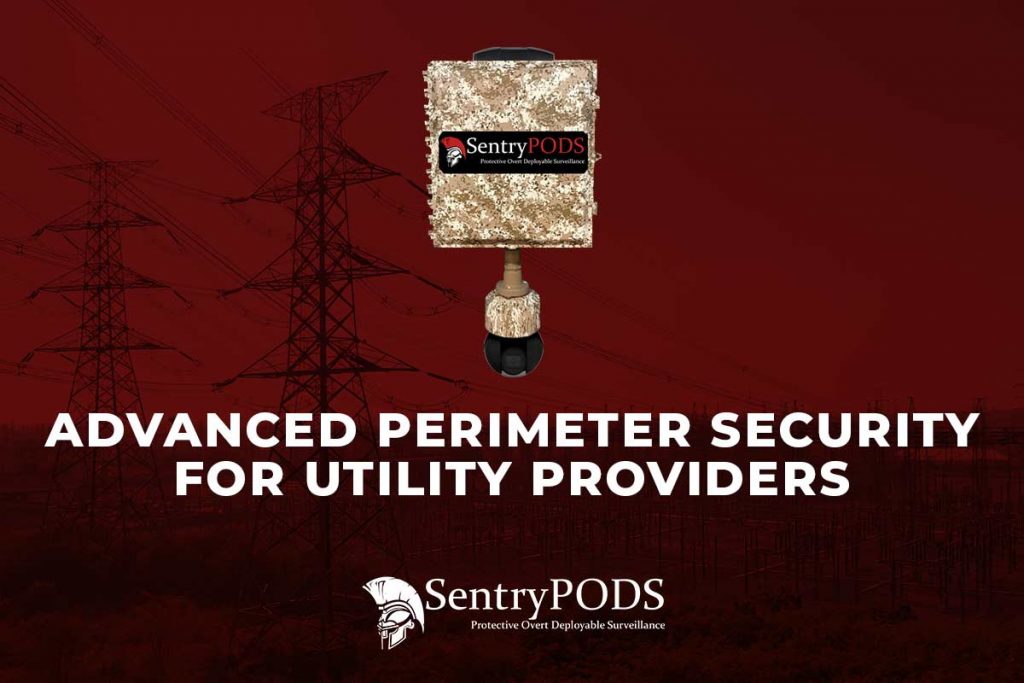Advanced Perimeter Surveillance For Utility Providers
 Perimeter protection is your first line of defense to detect an intruder and is key to preventing successful attacks by bad actors. It is especially important for utility providers to install a good security system that includes perimeter protection. Utility perimeter security is key to preventing both physical attacks and cyberattacks, both of which have become more prevalent in recent years. While terrorist activity at substations and other power generation facilities is concerning, theft and vandalism are more common problems. Substations have always been a target for theft, which causes expensive losses and compromises the safety of the substation. A multi-tiered approach to perimeter protection can mitigate the risk for facility operators. With that being said, investing in critical infrastructure surveillance makes it easy to securely protect your property’s perimeter.
Perimeter protection is your first line of defense to detect an intruder and is key to preventing successful attacks by bad actors. It is especially important for utility providers to install a good security system that includes perimeter protection. Utility perimeter security is key to preventing both physical attacks and cyberattacks, both of which have become more prevalent in recent years. While terrorist activity at substations and other power generation facilities is concerning, theft and vandalism are more common problems. Substations have always been a target for theft, which causes expensive losses and compromises the safety of the substation. A multi-tiered approach to perimeter protection can mitigate the risk for facility operators. With that being said, investing in critical infrastructure surveillance makes it easy to securely protect your property’s perimeter.
Why Do Utility Providers Need Perimeter Protection?
Electrical substations and other energy generation centers are a vital part of the power grid, providing electricity to millions of people across the nation. In recent years, high-profile attacks to substations that impacted the electrical grid have emphasized the risks of physical security breaches and their consequences. These incidents, in addition to longstanding problems like copper theft, vandalism, and liability, have prompted utility providers to invest in automated security systems that detect intruders and alert facility managers to security incidents in real-time.
Utility providers are often concerned about:
- The safety of their personnel, and the larger community
- Liability and negative perception caused by theft of service disruption
- Remote asset protection of widely distributed power assets
- Regulatory compliance as well as national security guidelines
The need for reliable intrusion detection systems to provide effective perimeter security for the energy industry’s assets has never been higher. Deploying utility perimeter security solutions can address the concerns listed above and give operators peace of mind.
Advanced Surveillance Technology For Utility Providers
Energy generation facilities and electrical substations are often located in remote and isolated areas. This means that they need to have the ability to accurately detect intruders as early as possible, ideally before they enter a secured area, and alert security staff with alarms and video footage. However, utility sites are best secured using a multi-layered system, starting from the outside with secure perimeter fencing. This works as a deterrent and a barrier that gives on-site security a chance to respond to any threats in an appropriate manner. Adding state-of-the-art utility video cameras and surveillance technology to this physical barrier creates a system that works in tandem for unmatched reliability. Some of the security measures utility providers can use to increase their utility perimeter security include:
- Perimeter fencing – high-security perimeter fencing is a major line of defense against external threats to utility sites and should be designed to thwart breaches ranging from basic theft or vandalism to full-on acts of terrorism. Types of perimeter fencing to consider include steel mesh panels, precast concrete walls, steel palisade fencing, or chain link fencing. Many forms of security perimeter fencing are also reinforced with security features like double fencing rows, omitted top rails, anchored bottom rails, height specifications, and added systems for lighting and surveillance.
- Access control – don’t provide thieves and other intruders with an easy entry to your site. Make sure that your gates are secure and will not allow vehicles easy access to your facility. Use access control systems and automated gates to make your facility more secure.
- Perimeter cameras – for a buffer zone beyond the fence line, consider using automated security cameras with real-time alerts as an early warning system. High-resolution video cameras with PTZ capabilities can be positioned along the perimeter for extra protection. As an added bonus, the video surveillance system can provide 24/7 remote monitoring when employees are off-site.
- Alarm systems – many modern alarm systems can be integrated with remote monitoring systems. In the event that an alarm is triggered, the cameras the alarm is networked with can be set to pan, tilt, and zoom, providing the individuals monitoring the system with the information that is needed to take appropriate action.
- Perimeter intrusion detection systems (PIDs) – PIDs can be mounted on your perimeter fence or buried in the ground, and are a strong addition to traditional perimeter fencing.
Protect Your Assets With Multi-Layered Perimeter Protection
A well-planned, designed, and installed fence and access solution will add real substance to utility perimeter security. Combine that with a state-of-the-art surveillance system, and your facility will have a strong, multi-layered approach to perimeter protection that can save an operator time, money, and reputation. However, please remember that any physical perimeter security product, regardless of the testing it has undergone, is only as good as its installation. Moreover, it can only perform correctly if it is regularly inspected, maintained, and repaired. Knowing this, it is good to practice regular and scheduled inspection of your facility’s fence line to identify any problems, just as it is important to schedule routine inspection and maintenance of your video cameras and surveillance technology to ensure that your system is functioning correctly.
For more information about security options for energy and power plants, click here.

Brent Canfield
CEO and Creator of SentryPODSBrent Canfield, CEO, and founder of Smart Digital and SentryPODS, founded Smart Digital in 2007 after completing a nine-year active-duty career with the United States Marine Corps. During the 2016 election cycle, he provided executive protection for Dr. Ben Carson. He has also authored articles for Security Info Watch.

